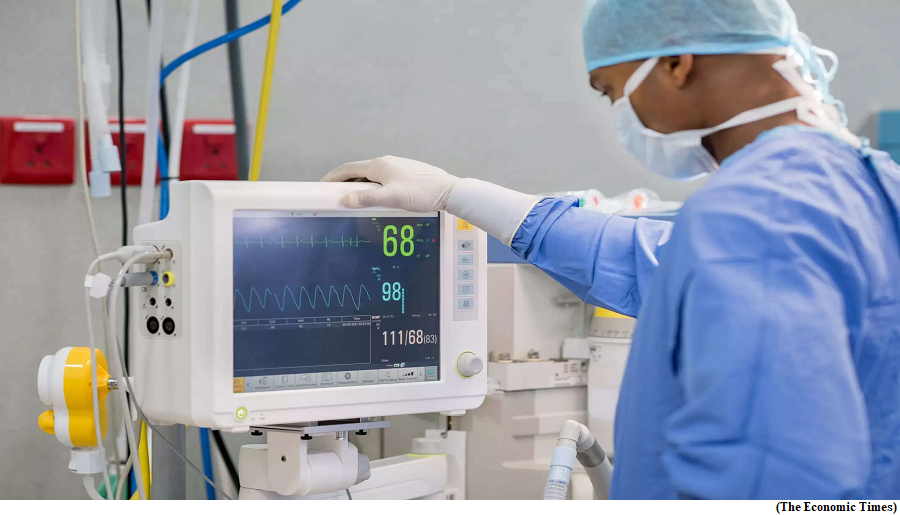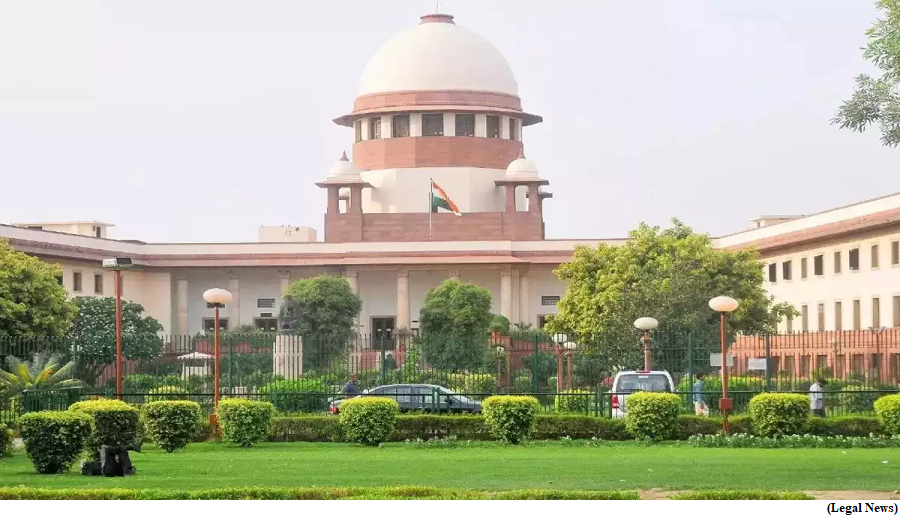Cabinet approves the Policy for the Medical Devices Sector (GS Paper 2, Governance)

Why in news?
- Recently, the Union Cabinet approved the National Medical Devices Policy, 2023.
- The medical devices sector in India is an essential and integral constituent of the Indian healthcare sector.
Sunrise sector:
- The medical devices sector in India is a sunrise sector which is growing at a fast pace.
- The market size of the medical devices sector in India is estimated to be $11 billion (approximately, ₹ 90,000 Cr) in 2020 and its share in the global medical device market is estimated to be 1.5%.
PLI scheme for Medical Devices:
- The Government of India has already initiated implementation of PLI Scheme for medical devices and support for setting up of 4 Medical devices Parks in the States of Himachal Pradesh, Madhya Pradesh, Tamil Nadu and Uttar Pradesh.
- Under the PLI scheme for Medical Devices, till now, a total of 26 projects have been approved, with a committed investment of Rs.1206 Cr and out of this, so far, an investment of Rs.714 Cr has been achieved.
- Under the PLI scheme, total of 14 projects producing 37 products have been commissioned and domestic manufacturing of high-end medical devices has started which include Linear Accelerator, MRI Scan, CT-Scan, Mammogram, C-Arm, MRI Coils, high end X-ray tubes, etc. Remaining 12 products will be commissioned in near future. Five projects out of total 26 projects have been approved recently, under Category B, for domestic manufacturing of 87 products / product components.
Salient Features of National Medical Devices Policy, 2023:
Vision:
- Accelerated growth path with a patient-centric approach and to emerge as the global leader in the manufacturing and innovation of medical devices by achieving 10-12% share in the expanding global market over the next 25 years.
- Policy is expected to help the Medical Devices Sector grow from present $11 Bn to $50 Bn by 2030.
Mission:
- Policy lays down a roadmap for accelerated growth of the medical devices sector to achieve the following missions viz, Access & Universality, Affordability, Quality, Patient Centred & Quality Care, Preventive & Promotive Health, Security, Research and Innovation and Skilled manpower.
Strategies to Promote Medical Device Sector:
Medical devices sector will be facilitated and guided through a set of strategies that will be cover six broad areas of policy interventions:
Regulatory Streamlining:
- In order to enhance ease of doing research and business and further to balance patient safety with product innovation measures such as creation of a Single Window Clearance System' for Licensing of Medical Devices coopting all the stakeholder departments / organizations such as AERB, MeitY, DAHD, etc, enhancing the Role of Indian Standards like BIS and designing a coherent pricing regulation, will be followed.
Enabling Infrastructure:
- The establishment and strengthening of large medical device parks, clusters equipped with world class common infrastructure facilities in proximity to economic zones with requisite logistics connectivity as envisioned under the National Industrial Corridor Program and the proposed National Logistics Policy 2021 under the ambit of PM Gati Shakti, would be pursued with the State Governments and Industry for better convergence and backward integration with medical device Industry
Facilitating R&D and Innovation:
- The policy envisages to promote Research & Development in India and complement the Department’s proposed National Policy on R&D and Innovation in the Pharma- MedTech Sector in India.
- It also aims at establishing Centres of Excellence in academic and research institutions, innovation hubs, ‘plug and play’ infrastructures and support to start-ups.
Attracting Investments in the Sector:
- Along with resent schemes and interventions like Make in India, Ayushman Bharat program, Heal-in-India, Start-up mission, the policy encourages private investments, series of funding from Venture Capitalists, and also Public-Private Partnership(PPP).
Human Resources Development:
- In order to have a steady supply of skilled work force across the value chain such as scientists, regulators, health experts, managers, technicians, etc., the policy envisages:
- For skilling, reskilling and upskilling of professionals in the medical device sector, we can leverage the available resources in Ministry of Skill Development and Entrepreneurship
- The policy will support dedicated multidisciplinary courses for medical devices in existing institutions to ensure availability of skilled manpower for futuristic medical technologies, high-end manufacturing and research, to produce future-ready MedTech human resources and to meet the evolving needs of the Sector
- To develop partnerships with foreign academic/industry organizations to develop medical technologies in order to be in equal pace with the world market.
Brand Positioning and Awareness Creation:
- The policy envisages the creation of a dedicated Export Promotion Council for the sector under the Department which will be an enabler to deal with various market access issues:
- Initiate studies and projects for learning from best global practices of manufacturing and skilling system so as to explore the feasibility of adapting such successful models in India.
- Promote more forums to bring together various stakeholders for sharing knowledge and build strong networks across the sector.
Way Forward:
- The policy is expected to provide the required support and directions to strengthen the medical devices industry into a competitive, self-reliant, resilient and innovative industry that caters to the healthcare needs of not only India but also of the world.
- The National Medical Devices Policy, 2023 aims to place the medical devices sector on an accelerated path of growth with a patient-centric approach to meet the evolving healthcare needs of patients.
SC modifies 2022 order on ESZ around national parks, sanctuaries
(GS Paper 2, Judiciary)
Why in news?
- The Supreme Court recently modified its 2022 order which directed that each protected forest such as national parks and wildlife sanctuaries must have an eco-sensitive zone (ESZ) of one kilometre.

What was the plea before the SC?
- The court was hearing a plea filed by the central government contended that if the directions are not modified a severe hardship would be caused to the millions of people living in ESZ.
- The government argued that it has already issued guidelines for declaration of ESZs on February 9, 2011, around national parks and wildlife sanctuaries which were framed after consulting the National Board for Wildlife and hence, was seeking the modification.
Key Highlights:
- A three-judge bench however, held that mining within a national park, a wildlife sanctuary and within an area of one kilometre from their boundary shall not be permissible as it would be hazardous for wildlife.
- The 2022 order besides demarcation of ESZ, had also banned mining within such parks and sanctuaries across the nation.
- Modifying its order, the court said its direction would not be applicable where national parks and sanctuaries are located on inter-state borders and share common boundaries.
- The order will also not be applicable to draft and final notifications in respect to national parks and sanctuaries issued by the environment ministry and in respect of the proposals that have been received by the ministry.
- It also directed the Centre to give wide publicity be given to the draft notification issued by it so that all persons interested have knowledge about it.
Earlier directions:
- Issuing a slew of directions, the apex court last year had said the role of the State cannot be confined to that of a facilitator or generator of economic activities for immediate upliftment of the fortunes of the state.
- The apex court had ordered that no permanent structure will be allowed within such ESZ and said if the local law or other rules provide for an ESZ of more than one kilometre, then the earlier provision would continue to apply.
- Each protected forest, that is national park or wildlife sanctuary must have an ESZ of a minimum one kilometre measured from the demarcated boundary of such protected forest in which the activities proscribed and prescribed in the Guidelines of February 9, 2011, will be strictly adhered to.
Jamua Ramgarh wildlife sanctuary:
- It had, however, held that for the Jamua Ramgarh wildlife sanctuary of Rajasthan, the ESZ shall be 500 metres so far as subsisting activities are concerned.
- The apex court order had come on a batch of applications filed in a pending PIL of 1995 and they raised two sets of issues the first one was related to mining activities in and around the Jamua Ramgarh wildlife sanctuary.
- The second set of issues related to prescribing ESZ surrounding the wildlife sanctuaries and national parks.
- It had also directed the principal chief conservator of forests of each state and Union Territory to make a list of subsisting structures and other relevant details within the ESZs forthwith, and furnish a report within a period of three months.



